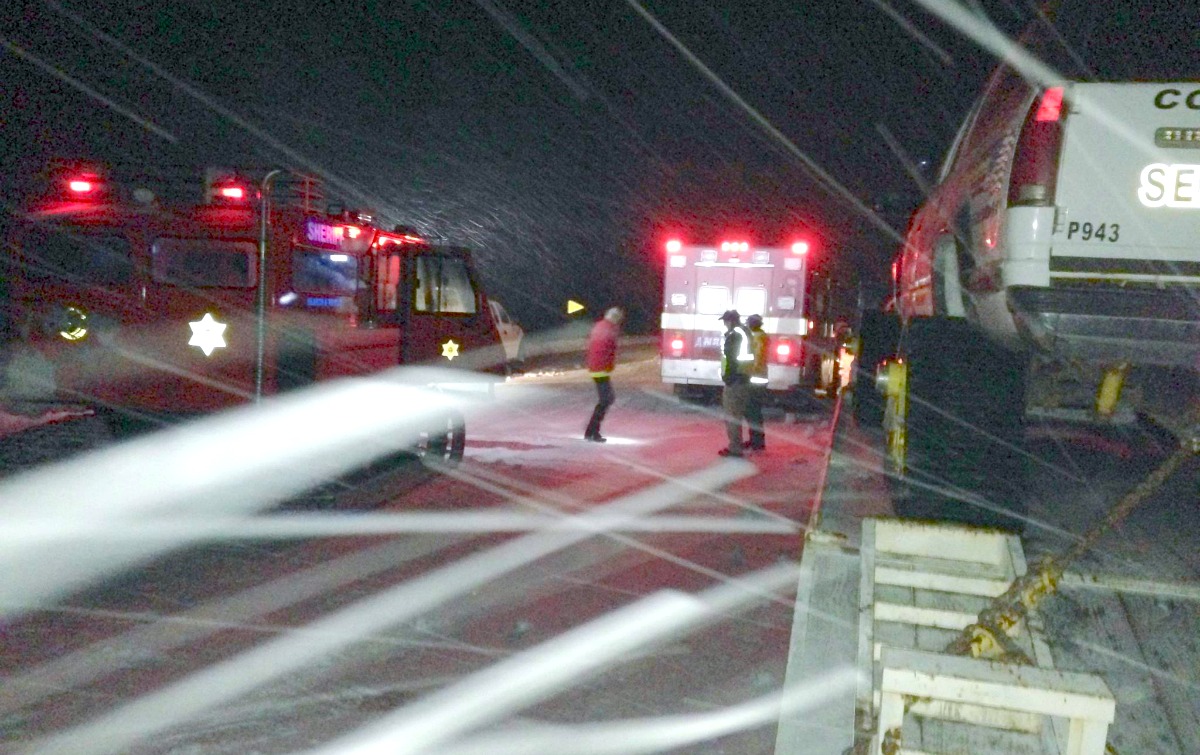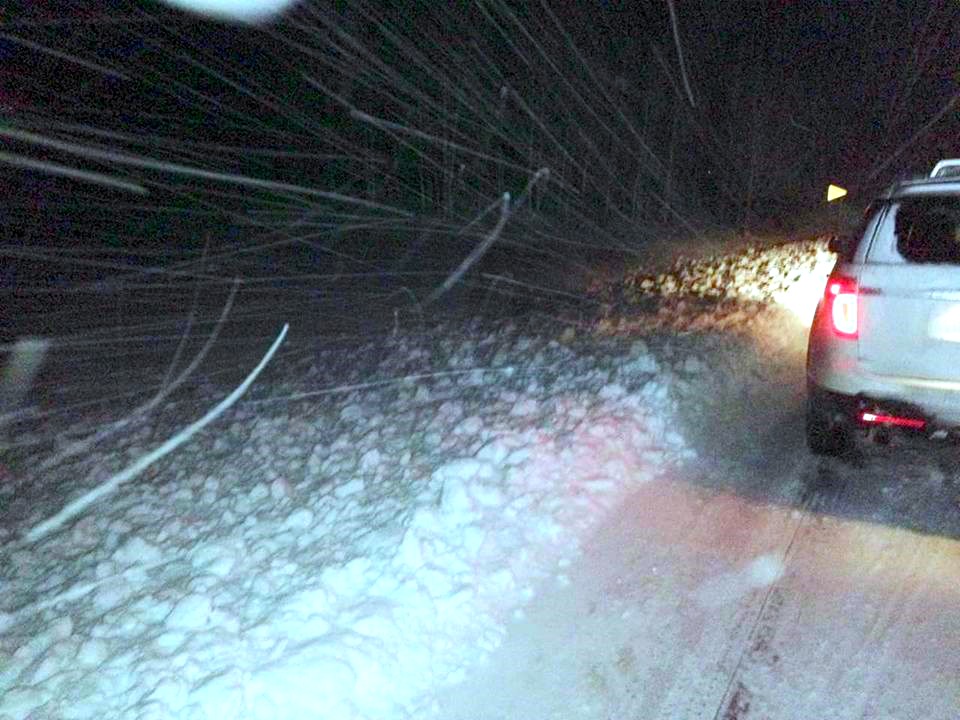
ST. GEORGE — A Pennsylvania woman found cold and freezing Saturday in an abandoned cabin near the North Rim of Grand Canyon National Park was slated to be released from the hospital Thursday.

Karen Klein, 47, was rescued Saturday after a Kane County Search and Rescue team located her in an abandoned employee cabin that had been closed for the season.
“I think that certainly being able to get out of the weather, and particularly the wind, was critical for her survival,” Coconino County Search and Rescue Sgt. Aaron Dick said in an interview Thursday. “She was wet and cold when rescuers found her.”
Klein had walked more than 26 miles during heavy snowfall to find help after she, her husband and 10-year-old son became stranded when their car became disabled on a forest service road.
Klein’s husband, Eric Klein, and son were located Friday in their vehicle after Eric Klein was able to hike to a road where he found cell service and called for help.

Both father and son, who suffered from exposure and related injuries, were located by a ranger with the Bureau of Land Management a short time later.
Read More: Kane County rescuers find woman missing since Thursday
The family is returning home to Pennsylvania sometime this weekend, Dick said, although a more thorough interview will be conducted with Klein before she leaves the area.
Details of the ordeal show how Klein may have saved her own life by entering that cabin and staying put, Dick added.
While initial reports said that Klein found an abandoned guard shack, the woman was actually located in a vacant employee cabin. Klein broke a window to get inside and stayed put.
Klein was suffering from extreme exposure to the point that she would have had a very difficult time rewarming herself, the officer said, and would need to be removed from that environment as quickly as possible.
When rescuers found Klein, they quickly built a fire to warm the woman while Coconino County Search and Rescue brought in a Snowcat to transport her to a waiting ambulance, Dick said. A Snowcat is an enclosed-cab, truck-sized, fully tracked vehicle designed to move on snow, according to information from Tucker Snowcat Corporation.
In response to numerous questions raised by the public about Klein’s rescue story, the Coconino County Sheriff’s Office and its Search and Rescue Unit released a statement along with a list of survival tips to help those intending to travel.
A Canadian video used in training with the Coconino Sheriff’s Department’s Search and Rescue teams was also shared, offering an excellent resource to learn about the effects of exposure and how to stay safe.
A statement posted on the Coconino Sheriff’s Department’s Facebook page introduces the survival tips:
Each year, the Coconino County Sheriff’s Office responds to countless calls from motorists who have become stranded or stuck on impassable roads because they were following ‘alternate routes’ listed through GPS and other map apps. Additionally, severe weather, a wrong turn or traffic accidents can become life threatening if not prepared.
Tips to be weather aware and equipment prepared:
- Know before you go – Be aware of existing and impending weather conditions, and check weather and road reports frequently.
- Leave detailed trip plans with a trusted person – the plan should include times and dates of departure and return.
- Don’t rely on phones and map apps, as there are many places where cellular services or coverage still do not exist.
- Accept responsibility for your safety. It may take several hours for emergency personnel to respond, or sometimes days before someone finds you if your location is unknown.
- Learn about the terrain, conditions, equipment and weather before you start. Bring survival gear and emergency provisions with you.
- Stay together, turn back and come the way you came if possible, or stay put, which is safer than being exposed to the elements or unknown terrain where unexpected conditions can affect your ability to survive.
- Be prepared for cold weather and winter driving conditions by starting with a full tank of gas, chains, flashlight, blankets and other emergency items. Always fill your gasoline tank before entering open country, even for a short distance. If the vehicle is left running for heat then make sure the tail pipe is properly vented, to avoid carbon monoxide poisoning.
- Dress warmly in layered clothing. Layers allow you to easily adjust your clothes to regulate body moisture and temperature.
- Don’t park along the highways to play in the snow. Watch out for hazards and other visitors.
A more detailed list and additional information can be found on the Coconino County Sheriff’s Office Facebook site.
Dick shared his own thoughts on Klein’s rescue and the fact that it could have had a different ending.
“I think it’s a combination of some luck there,” he said, “and that Klein had the ‘where with all’ to break into that cabin and get out of the cold, which may have just saved her life.’

The Coconino County Sheriff’s Office has a dedicated full-time sergeant to manage the Search and Rescue, or SAR program, and is made up of deputies and over 100 unpaid volunteers who are specially trained for search and rescue operations.
This report is based on preliminary information provided by law enforcement or first responders and may not contain the full scope of findings.
Email: [email protected]
Twitter: @STGnews
Copyright St. George News, SaintGeorgeUtah.com LLC, 2016, all rights reserved.
It really seems that this family made a lot of stupid mistakes that we should all learn from. Why did they insist on trying to reach the North Rim at the higher elevations in the winter? Why didn’t they ask local people for advice? Why didn’t they use more caution when the main highway was blockaded? Why didn’t they check the weather to learn about the snowstorm coming through? Why didn’t they give their plan to someone who would check on them? Did their car become stuck because they chose to drive on muddy roads covered with slick snow? Why didn’t they take sufficient food and water for any possible emergencies? Why did they separate from each other? Why did she leave the vehicle? Did they have enough gas in the tank to run the heater for an extended period? Did they have emergency blankets? Why didn’t she check the GPS to see where the roads went, so she could get back to someplace with traffic? Why didn’t she return the way they came (from civilization)? If she ended up near the entrance station or near the North Rim Lodge (unclear), she was 30-40 miles from the nearest traffic.
I’m really glad they survived, but it’s not because of making many good decisions.
Can you please report on the route they took driving into the forest on the unpaved road(s) and the route the lady took in her 26-mile trek. At least the beginning and ending points that allowed someone to calculate 26 miles. If we see this on a map, we can understand better why people shouldn’t try to reach the North Rim via the Kaibab Plateau in the winter (even when it is often reachable in the winter on other routes such as the road to Toroweap when the roads are dry).